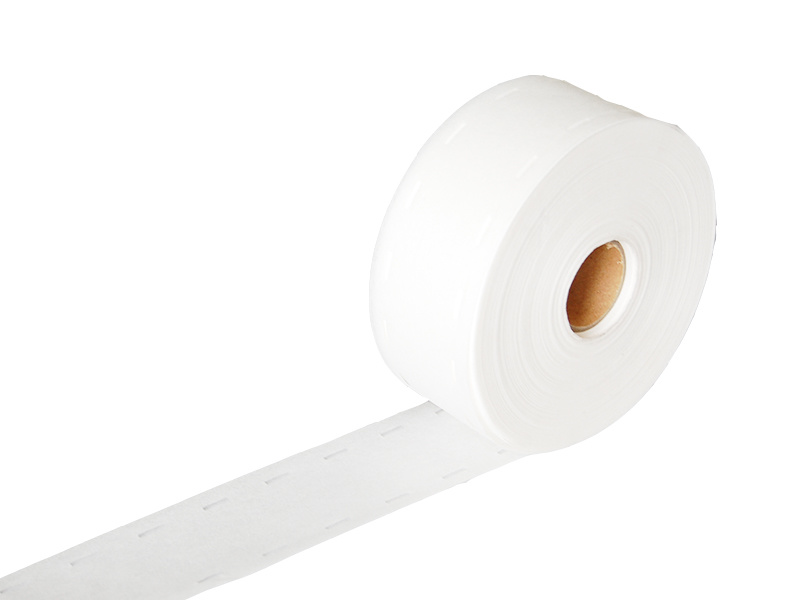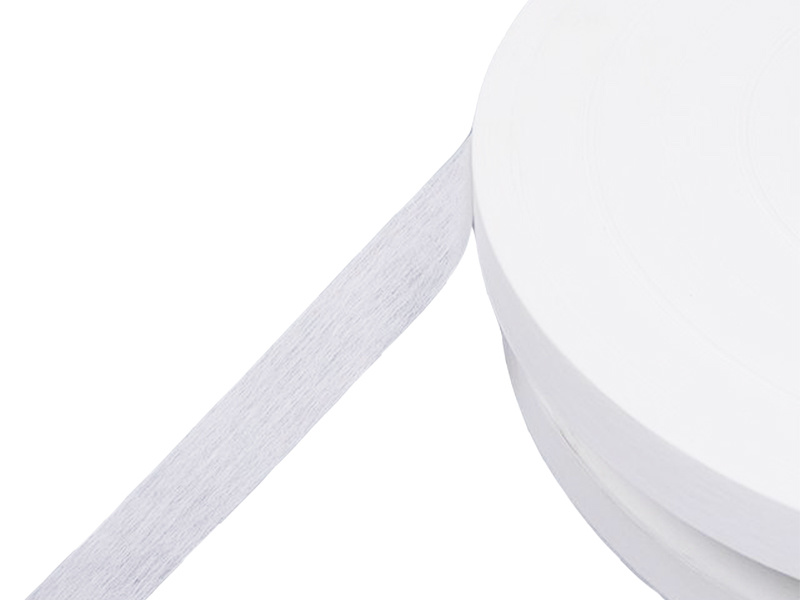How Adhesive Interlining Nonwoven Enhances Fabric Durability: A Comprehensive Guide
Release time:
2025-06-17
How Adhesive Interlining Nonwoven Enhances Fabric Durability
Table of Contents
- 1. Introduction to Adhesive Interlining Nonwoven
- 2. Understanding Nonwoven Fabrics
- 3. What is Adhesive Interlining?
- 4. Benefits of Using Adhesive Interlining Nonwoven
- 5. Applications of Adhesive Interlining Nonwoven
- 6. Technological Advancements in Adhesive Interlining
- 7. Sustainability in Nonwoven Fabrics
- 8. Frequently Asked Questions
- 9. Conclusion
1. Introduction to Adhesive Interlining Nonwoven
In the textile industry, the demand for durable and versatile materials is ever-increasing. Adhesive interlining nonwoven fabrics have emerged as a pivotal solution, significantly enhancing the durability and overall quality of various textiles. These innovative materials are not only lightweight yet robust but also offer exceptional bonding capabilities, making them a preferred choice among manufacturers and designers alike. In this article, we delve deep into how adhesive interlining nonwoven enhances fabric durability, focusing on its benefits, applications, and the latest technological advancements.
2. Understanding Nonwoven Fabrics
Nonwoven fabrics are made by bonding fibers together using various methods, such as mechanical, thermal, or chemical processes. Unlike woven or knitted materials, which require intricate techniques to interlace threads, nonwoven fabrics are produced in a continuous sheet, making them more cost-effective and versatile.
2.1 Types of Nonwoven Fabrics
There are several types of nonwoven fabrics, including:
- **Spunbond:** Created from continuous filaments, known for their strength and durability.
- **Needlepunch:** Made from staple fibers bonded through needle punching, offering excellent insulation properties.
- **Meltblown:** Composed of fine fibers, ideal for filtration applications due to its high surface area.
3. What is Adhesive Interlining?
Adhesive interlining refers to a specific type of nonwoven fabric that is coated with adhesive materials. This coating allows the interlining to bond seamlessly to the main fabric during the manufacturing process. The interlining serves as a supportive layer, enhancing the structural integrity of garments and other textile products.
3.1 Components of Adhesive Interlining
Adhesive interlining typically consists of:
- **Base Fabric:** The main nonwoven material that provides strength.
- **Adhesive Coating:** A layer of thermoplastic or thermosetting adhesives that enable the bonding process.
- **Release Liner:** Often used to protect the adhesive until application.
4. Benefits of Using Adhesive Interlining Nonwoven
The incorporation of adhesive interlining nonwoven fabrics in textiles offers numerous advantages, particularly in enhancing durability.
4.1 Increased Fabric Strength
By providing additional support, adhesive interlining significantly improves the tensile strength of fabrics. This added strength helps prevent tearing and stretching, particularly in high-stress areas of garments.
4.2 Enhanced Shape Retention
Adhesive interlining helps fabrics maintain their shape and structure over time. This is especially beneficial for tailored garments, ensuring they look sharp and well-fitted even after multiple washes.
4.3 Improved Performance in Various Conditions
Adhesive interlining nonwoven fabrics can withstand varying environmental conditions, including humidity and temperature fluctuations. This resilience ensures that garments remain comfortable and functional regardless of external factors.
4.4 Cost-Effectiveness
The use of adhesive interlining can reduce the need for additional layers of fabric, thus lowering material costs. Manufacturers can achieve desired durability without inflating production expenses.
5. Applications of Adhesive Interlining Nonwoven
Adhesive interlining nonwoven fabrics are utilized across various sectors, reflecting their versatility and utility.
5.1 Fashion and Apparel
In the fashion industry, adhesive interlining is crucial for creating structured garments, collars, cuffs, and waistbands. It provides the necessary support while enhancing the overall aesthetic appeal.
5.2 Home Textiles
From curtains to upholstery, adhesive interlining nonwoven fabrics are instrumental in enhancing the durability and longevity of home textile products. They provide added insulation and stability to soft furnishings.
5.3 Automotive Textiles
In the automotive sector, adhesive interlining is used to improve the durability of seat covers, headliners, and carpets. Its lightweight nature contributes to fuel efficiency while maintaining a high level of comfort.
5.4 Medical Textiles
Adhesive interlining nonwoven fabrics are also used in medical textiles, including surgical gowns and drapes. Their sterile properties and durability make them ideal for healthcare applications.
6. Technological Advancements in Adhesive Interlining
Recent innovations in manufacturing technologies have led to significant improvements in adhesive interlining nonwoven fabrics.
6.1 Eco-Friendly Adhesives
With sustainability becoming a top priority, manufacturers are exploring eco-friendly adhesive options made from natural or biodegradable materials. These innovations contribute to reducing the environmental impact of textile production.
6.2 Advanced Bonding Techniques
New bonding techniques, such as ultrasonic and laser bonding, offer enhanced precision and durability in adhesive interlining applications. These methods ensure a stronger bond without compromising the fabric's lightweight nature.
6.3 Customization Options
Advancements in technology allow for greater customization of adhesive interlining nonwoven fabrics. Manufacturers can tailor properties such as thickness, adhesive strength, and fiber composition to meet specific requirements.
7. Sustainability in Nonwoven Fabrics
As awareness of environmental concerns grows, the textile industry is increasingly focusing on sustainability. Nonwoven fabrics, particularly those incorporating adhesive interlining, are making strides in this direction.
7.1 Recyclability
Many nonwoven fabrics can be recycled or repurposed, reducing waste and environmental impact. Manufacturers are also looking at ways to improve the recyclability of adhesive interlining materials.
7.2 Reduced Water Usage
The manufacturing process for nonwoven fabrics generally requires less water compared to traditional woven textiles, making it a more sustainable option.
7.3 Sustainable Sourcing of Raw Materials
There is a growing trend towards sourcing fibers from sustainable and renewable resources, minimizing the ecological footprint of adhesive interlining production.
8. Frequently Asked Questions
8.1 What is the primary function of adhesive interlining?
Adhesive interlining primarily provides additional support and durability to fabrics, enhancing their strength and shape retention.
8.2 Is adhesive interlining suitable for all types of fabrics?
While adhesive interlining is versatile, its suitability depends on the fabric type and intended application. It's best to consult with manufacturers for specific recommendations.
8.3 How does adhesive interlining affect fabric care?
Fabrics with adhesive interlining may require special care, including specific washing and drying methods, to maintain their integrity.
8.4 Can adhesive interlining be used in high-temperature applications?
Some adhesive interlining materials are designed to withstand high temperatures, making them suitable for applications like automotive textiles. Always check the specifications before use.
8.5 What are the environmental impacts of adhesive interlining nonwoven fabrics?
The environmental impacts vary based on the adhesive materials and manufacturing processes used. Many manufacturers are working to reduce these impacts through sustainable practices.
9. Conclusion
Adhesive interlining nonwoven fabrics play a critical role in enhancing fabric durability, providing strength, and ensuring a long-lasting performance for a myriad of applications. Their versatility and adaptability make them an essential component in modern textile production. As technology continues to advance, the potential for further improvements in adhesive interlining will only grow, ensuring that fabrics remain resilient against the challenges of daily wear and environmental factors. Embracing these innovations not only benefits manufacturers but also leads to higher quality products for consumers, reinforcing the importance of adhesive interlining nonwoven fabrics in the textile industry.
Adhesive Interlining Nonwoven
Previous Page
Previous Page
Latest News
Nantong Rainbow Technology Co., Ltd.
Telephone:+86-13587673537
E-mail:chrislc717@163.com
Address: Group 42, Xizansi Village, Xiting Town, Tongzhou District, Nantong City, Jiangsu Province

Copyright©2024 Nantong Rainbow Technology Co., Ltd. | Powered by www.300.cn
Copyright©2024 Nantong Rainbow Technology Co., Ltd.
Powered by www.300.cn




